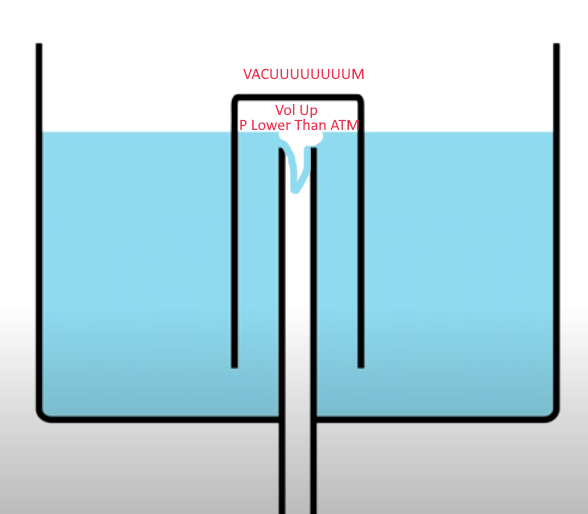The vacuum is not important in the first instants where the siphon is operating. Indeed, there will not be a vacuum at first. It will be atmospheric pressure inside the bell, as you point out.
The vacuum becomes important as the siphon picks up speed and starts emptying the tank. As the water drains out of the drain tube, something has to occur to take the space of that volume of water. Either air needs to flow into that space, or water does. While the water level in the tank is above the level of the top of the drain, its pretty easy to see that what replaces it is water, because the water level outside of the bell is higher than inside.
Once the water level in the tank is below that of the drain, the vacuum becomes important. The volume of air in the bell can grow, as you show in your pseudo-answer. However, when it does so, the pressure in that air volume decreases, which pulls more water into the bell. Once there is enough water in the bell, gravity will smooth out the surface of the water to cover the siphon hole, and that will feed more water into the siphon.
If you cannot develop a sufficient vacuum, meaning you did not get the bell sufficiently full (because you didn't put enough water in the tank), then the slug of water that falls into the drain tube can further down the drain tube before the vacuum is strong enough to pull enough water up into the bell. When this happens, the slug of water in the drain tube is eventually pulled to one side by the difference in pressure between the outside air below the drain and the low-pressure area in the bell, and a bubble of air gets to travel backwards into the bell. This further reduces the pressure difference, so it can't pull the water up into the bell, and we quickly find the siphon fails to start.


